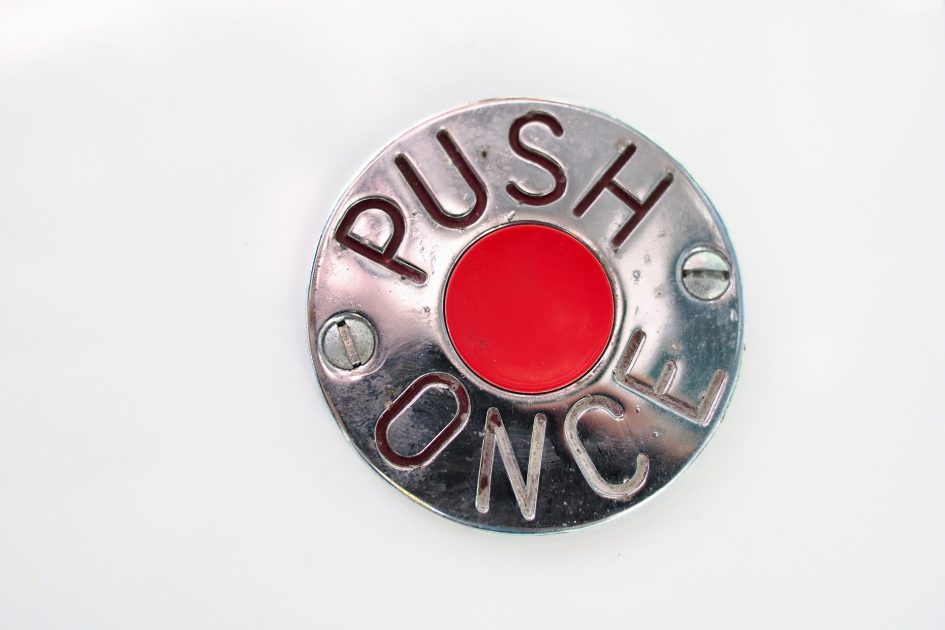This past week, I’ve been intensely and intentionally applying some concepts from David Rock’s Your Brain at Work, particularly “self-directed neuroplasticity.” I’ve also been applying them in relation to the Enneagram social styles of Assertive, Compliant and Reactive. Stay with me. As an “assertive” type, I not only like to get my way, I can unintentionally assert my ideas, authority, and energy to sway people and projects in a way that can trigger an equal and opposite reaction, which is usually counter-productive. It also can be hard on relationships. “Sometimes that energy can be hard to be around,” is how a colleague kindly but directly described Enneagram Type 3 assertive behaviors. Duly noted.

Don’t Tell Me What to Do
And because I am an assertive type I have an instant reaction that goes off in my brain when someone tells me what to do, offers unsolicited advice directly or couches advice in a suggestion. If I haven’t invited this advice, am hungry, tired, or feel threatened I can immediately move to resistance or to a defensive posture. This reflex is built into me and goes deep. My experience won’t resonate with everyone, but it’s very true for me. For example, when I’m working through a knotty problem, if someone stops my train of thought with direct advice, my immediate reaction is to resist even if they have more experience and are actually better at solving this problem. I want to have my own insights.
This got me thinking about how I was approaching colleagues not only with my words but with my physical presence. When might it feel to them like I was telling them what to do? I started noticing when they rejected or were open to my ideas, or leaned in or away from me physically. How often was I letting them have their own insights rather than asserting mine? I tried practicing a kind of empathy hyper-vigilance by paying closer attention to physical and verbal cues and adjusting my body language and words to be more compliant rather than assertive. If I felt that I was coming on too strong or giving the impression of telling someone else what to do, then I backed off, when I could stop myself. My brain is not a perfect system. When I intentionally inhibit my reflexive response I move from my limbic brain to my pre-frontal cortex which takes a lot of energy.
In one case a colleague was in a slightly emotionally elevated state as she described a project she was working on. I decided to take the opportunity to practice some advanced deescalation techniques I had learned at a recent training. I slowed down my own speech, lowered the volume and tone of my voice, and modulated my hand motions to try and moderate her emotion. It worked. She calmed down slightly which helped us get more in synch. When I take the time to pay closer attention to the other person’s state and am less focused on the outcome of the conversation, it helps me slow my own reflex to solve a problem for someone else or tell them what to do.
Hit the Pause Button
In another situation, I could tell a colleague was tired and frustrated. But I had an idea I was eager to share. Normally I would have gone into the conversation full strength, asserting my idea and hoping she would agree and get excited with me. I hit the pause button instead. I took in a deep breath through my nose, fully expanding my chest, intentionally feeling my heart fill the larger space I created with this breath. When I exhaled I consciously kept expanding my heart throughout the exhale. A natural consequence of this particular kind of intentional breath is that it changes my posture. It forces me to stand up straighter, pull my shoulders back, and give me a feeling of both warmth and confidence that instantly relaxes my mental state. This simple but effective action took an incredible amount of self-management – Rock calls it “putting on your mental brakes.” As I felt myself relax and let go of my need to assert my idea, I felt her relax as well. (That energy can be hard to be around, I reminded myself.)
Everybody is talking about breathing these days. After I read that a deep breath through the nose increases nitrous oxide in our system I spent hours researching if that was true. Isn’t nitrous oxide laughing gas? I thought maybe there was something to that. I’m no doctor and no yogi but the best explanation I found that matched what I was experiencing was in an article that talked about how nitric oxide produced in the sinuses when I take in a breath through my nose increases pulmonary function. It is good for the heart literally and figuratively.
Putting on my mental and physical brakes is an act of inhibition. It is surprisingly emotionally and physically exhausting, especially for my brain. I have to admit that it does work. I started using an internal “pause button” to first assess the mood of an individual, assess the relative importance of my idea and determine whether what I want to contribute needs to be said at all, if it can wait, or if I should let someone else say it. My three surprises were how well this worked, how tired it made me, and how it improved my relationships. If I don’t want you to push me then maybe I shouldn’t always be trying to pull you.
When I inhibit my assertive behavior mentally by being aware of my limbic reaction, I force my thinking into my prefrontal cortex which increases the likelihood that I will be more thoughtful. When I inhibit my assertive behavior physically by modulating my voice or body I move from thinking to being which increases the likelihood I will be more empathetic. And when I am mindful of the humanity of others, I am reminded that people and situations are put on my path (not in my way).
Recommended Reading
Coaching with the Enneagram, Ginger Lapid-Bogda (2016)
This is the text Ginger used for the class Coaching with the Enneagram. It’s where I got to learn and practice the modulating and breathing techniques.
Your Brain at Work: Strategies for Overcoming Distraction, Regaining Focus, and Working Smarter All Day Long, David Rock (2009)
I don’t want to turn this book back in to the library. I’ve marked it with sticky notes all over the place. I learned from the image he used of mental brakes wearing out just like the brakes of a car. Each time you pump the brake, the lining wears out just a little. Mental brakes need relining too. He has done an excellent job of gathering a lot of the recent brain research and making it understandable and applicable. There are also many helpful suggestions for improving higher level thinking. An excellent resource.

October 22, 2017 at 3:26 pm
Thanks for reading.
October 19, 2017 at 11:52 pm
Wow, so many great insights! Enjoyable read and love to hear what you are learning. Loved the last line, “people and situations are put on my path (not in my way).”